Periodicals
Periodicals

Un Rectangle Quelconque n°5
Tomas Sidoli, Emmanuel Régniez and 1 more
Avec les poèmes et traductions de: Warsan Shire, Sika Fakambi, Anne-Claire Hello, Aurore Dal Mas, Connie Scozzaro, Chloe Chignell, Camille Fresnois, Simon Asencio, Marie De Quatrebarbes.
Aves les images de Aurore Dal Mas.
Édition: Thomas Le Goff, Emmanuel Régniez, Tomas Sidoli.
Les éditions du quelconque se divisent en deux projets, une maison d'édition (à venir) et une revue, Un Rectangle Quelconque. Cette dernière, chaque semestre, propose de découvrir des auteurs de poésie venant de tous horizons géographiques et esthétiques. La maison d'édition, elle, sera l'occasion de présenter aux lecteurs francophones des nouvelles voix de la poésie actuelle.

Randy 2010-2013
RANDY is a 300-plus page full color anthology of RANDY zines spanning 2010-2013. Initiated by artist A.K. Burns and publisher Sophie Mörner, RANDY was a fearless celebration of queer/feminist arts.
Contains over 100 interviews, conversations and projects including work by:
niv Acosta, Jess Arndt, Meriem Bennani, Sadie Benning, Elizabeth Bethea, Ramdasha Bikceem, Cass Bird, Dana Bishop-Root, Pauline Boudry, boychild, Kathe Burkhart, Nao Bustamante, Jibz Cameron, Silvia Casalino, Christelle de Castro, Leidy Churchman, Jon Davies, Hayden Dunham, Celeste Dupuy-Spencer, Nicole Eisenman, Edie Fake, Corrine Fitzpatrick, Daphne Fitzpatrick, Shannon Funchess, Mariah Garnett, Luke Gilford, Julia Gillard, Jules Gimbrone, Reina Gossett, Goodyn Green, Gordon Hall, Harmony Hammond, Onya Hogan-Finlay, Emily Hope, Katherine Hubbard, Amber Ibarreche, Mariana Juliano, Stanya Kahn, Sarah Forbes Keough, Pozsi B Kolor, Adam Krause, Lisa Lenarz, Katerina Llanes, Amos Mac, Lee Maida, India Salvor Menuez, Lessa Millet, MPA, Ulrike Müller, Sheila Pepe, Litia Perta, Cassie Peterson, Isaac Preiss, R.H Quaytman, Jen Rosenblit, Colin Self, Mel Shimkovitz, Amy Sillman, Tuesday Smillie, Jazmin Venus Soto, Matthew Stone, Ginger Brooks Takahashi, Lanka Tattersall, Wu Tsang, Scott Valentine, Leilah Weinraub, Hanna Wilde, Martha Wilson, Io Tillett Wright, Geo Wyeth, Yes! Association/Föreningen Ja!

Randy Issue #3
Randy engages inter-generational dialogue as a means to examine multiple perspectives on queer identity and gender.
In bringing together under-represented voices in a collaborative discussion, Randy expands the politics of art, sexuality, and aesthetics. Intent on fostering un-trodden affiliations, Randy publishes both emerging and established artists and writers. Through printed content, special events and curated shows, Randy produces an urgently needed genealogy of international queer artists and thinkers alike.
Randy is the personal and nepotistic project of A.K. Burns and Sophie Morner. Initiated in late 2009, Clark Solack became co-editor in the fall of 2011.
Issue #3—Reina Gossett / Tuesday Smillie / Jen Rosenblit / Niv Acosta / Julia Gillard / Martha Wilson / Ramdasha Bikceem (Klub Kid Vintage) / Stanya Kahn / Emily Hope / Sadie Benning / Sarah Forbes Keough / Meriem Bennani / Cassie Peterson / Kathe Burkhart / Isaac Preiss / Clark Solack / Hanna Wilde / Melanie Bonajo

Girls Against God Issue #2
In collaboration with cross-disciplinary artist Bianca Casady of music duo CocoRosie, 2013 brought the release of a new print magazine entitled Girls Against God (GAG). A boldly feminist exploration and multi-generational endeavor, GAG deploys the arts to illuminate the oppressive, obsolete nature of traditional, male-defined religions and other patriarchal institutions—“We must resist and reinvent,” Casady declares.
The second issue of GAG—a pocket book of practical magic—investigates and celebrates spiritual healing, instinctually tying together the earth and women’s bodies. Through essays, fiction, poetry, interviews and spells GAG Issue 2 delves into the roots of occult earth wisdom passed through generations of women against persecution and patriarchy. Texts are accompanied by rich black and white images ranging from pen and ink illustrations to enigmatic photography. The issue gathers around a collaborative photographic exploration between Casady and performance artist Melanie Bonajo entitled “Witchunt,” and also includes interviews with notable artists Carollee Schneemann and Suzanne Lacy
Issue #2—Melanie Bonajo / Eve Bradford / Trinie Dalton / Karolina Daria Flora / Mary Hanlon / Julie Higonnet / J.ZarA / Emely Neu / Kara L. Rooney / Jean Marc Ruellan / Minka Sicklinger / Macho Mel Shimkovitz

Girls Against God Issue #1
In collaboration with cross-disciplinary artist Bianca Casady of music duo CocoRosie, 2013 brought the release of a new print magazine entitled Girls Against God (GAG). A boldly feminist exploration and multi-generational endeavor, GAG deploys the arts to illuminate the oppressive, obsolete nature of traditional, male-defined religions and other patriarchal institutions—“We must resist and reinvent,” Casady declares.
Created in partnership with artist Anne Sherwood Pundyk, GAG’s now out-of-print debut issue is a lushly colorful tabloid-sized print publication, showcasing provocative, original artwork alongside comprehensive interviews and essays with an international cadre of artists.
Issue #1—Antony / Gabby Bess / Melanie Bonajo / Vaginal Davis / Yasmine Hadan / Emely Neu / Kembra Pfahler / Marguerite Stern / Alexyss K. Tylor / Johanna Constantine / Mary Hanlon / Julie Higonnet / Molly O’Brien / Chloe Olewitz / Alice O’Malley / Kara L. Rooney / Jean Marc Ruellan
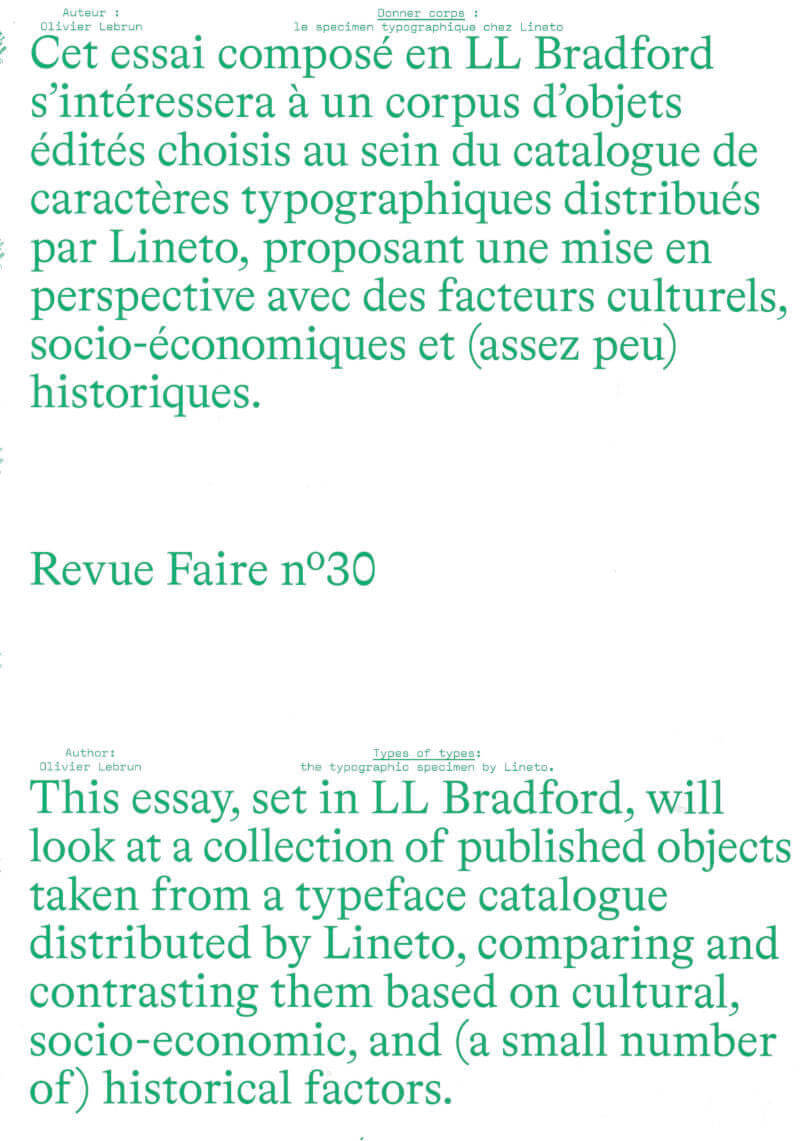
Revue Faire n°30: Types of types: the typographic specimen by Lineto
For Lineto (https://lineto.com) the Specimen plays out through forms and formats in order to promote the foundry’s typefaces: books, posters, envelopes, pamphlets, letter transfers, print ads, and video clips as well as inflatable structures and bootlegs of logotypes. When Reala published LL Biff in 2000, the specimen employed graffiti culture and its modes of distribution, along with a combination of two references: “Medium is the message”*, “Style is the message”**. For Lineto the citation is a form that allows them to distribute their typographic catalogue while promoting diverse cultural fields: “Ignorance of your own culture is not considered cool!”***
* — Marshall McLuhan, Understanding Media: The Extensions of Man, 1964
** — Tony Silver and Henri Chalfant, Style Wars, 1983
*** — Print ad for Lineto published in Dot Dot Dot #16, 2008 that cites The Residents, Duck Stab Poster, 1978
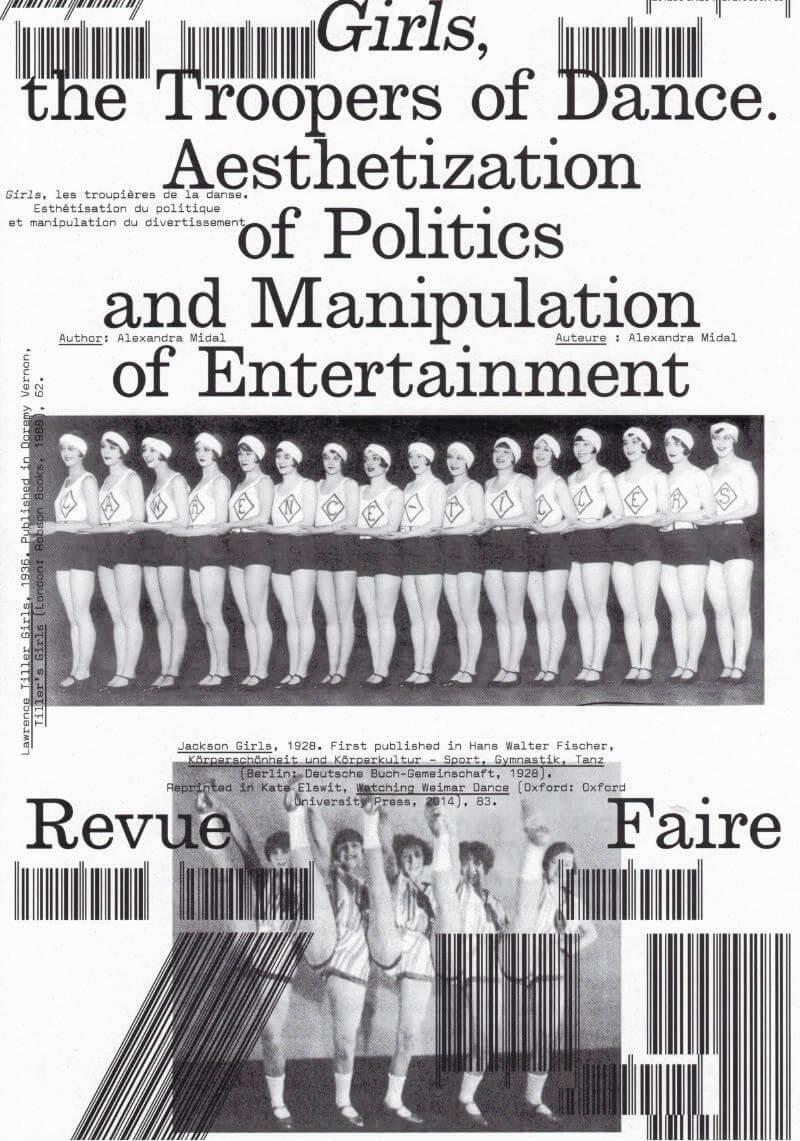
Revue Faire °29: Girls, the Troopers of Dance
The British origins of synchronized dancing—invented in 1880 by John Tiller in a cotton mill—were quickly forgotten in Berlin, where periodicals established themselves as the expression of standardization and American capitalism. The famous Tiller Girls had become the modern figure of the “New Woman”, performing in shows attracting more than four million spectators each year. A seduced Hitler asked for his own troupe: the Hiller Girls. Face to face, both periodicals look like strictly indistinguishable replicas, apart from their opposite messages.
Synchronized dancing revealed the democratic and fascist forms given to the political discourse of the Weimar Republic when the NSDAP seized power. Between the power of forms and forms of power, amid the destruction of cities, decrees banishing the use of Fraktur, and the destruction of degenerate art, those dance shows, undoubtedly because of their popularity, showed that National Socialism was using insidious and invisible strategies to empty forms of their content only to maintain their appearance intact, thus revealing a shadow practice that, in the end, turned out to be just as barbaric as world-wide destruction or the burning of books.
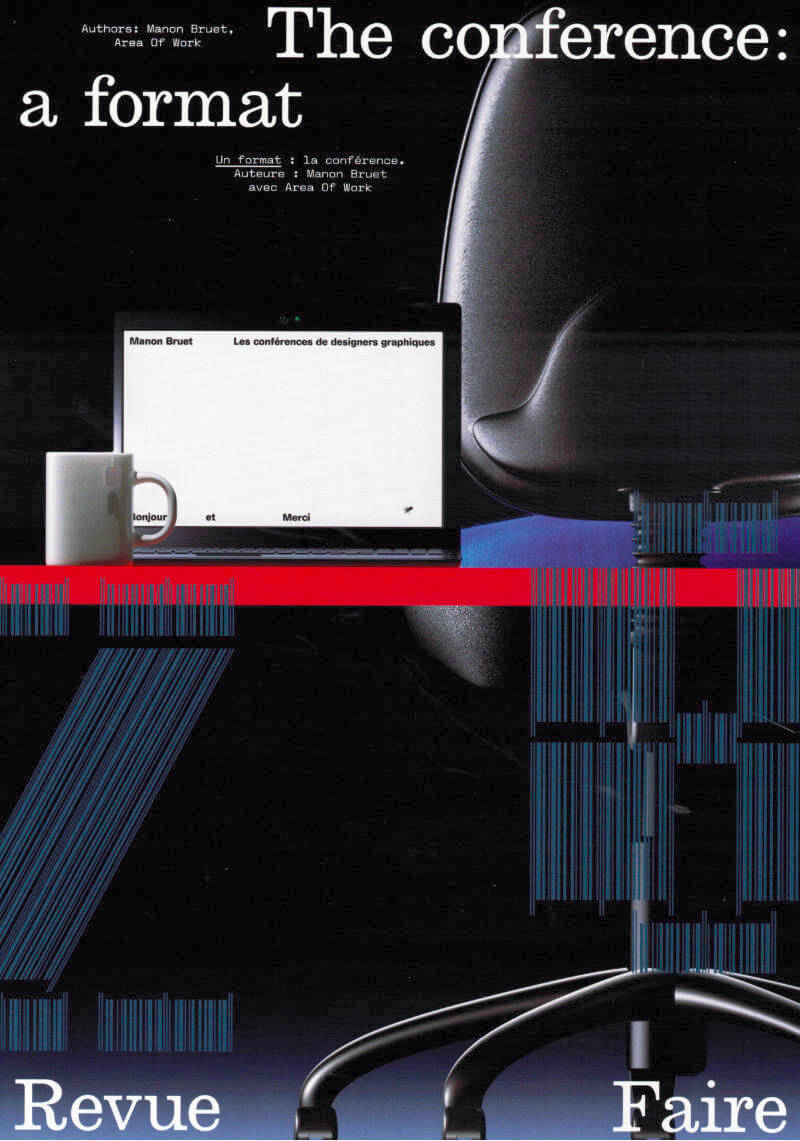
Revue Faire n°28: The Conference: A Format
There are an increasing number of spaces in the field of Graphic Design where work can be promoted. Intermediary platforms between practitioners and the public can come in the form of specific tools (Instagram, for example) or even events that are organized for that purpose (festivals and exhibitions). The conference is one of these platforms. A true ephemeral editorial object, it is highly suited to the explanation and extension of the practices and methodologies of designers. It is, for certain designers, the opportunity to take stock of an approach, an inventory of finished forms, and for others, on the contrary, a pretext for the production of new, sometimes more performative, even experimental forms.
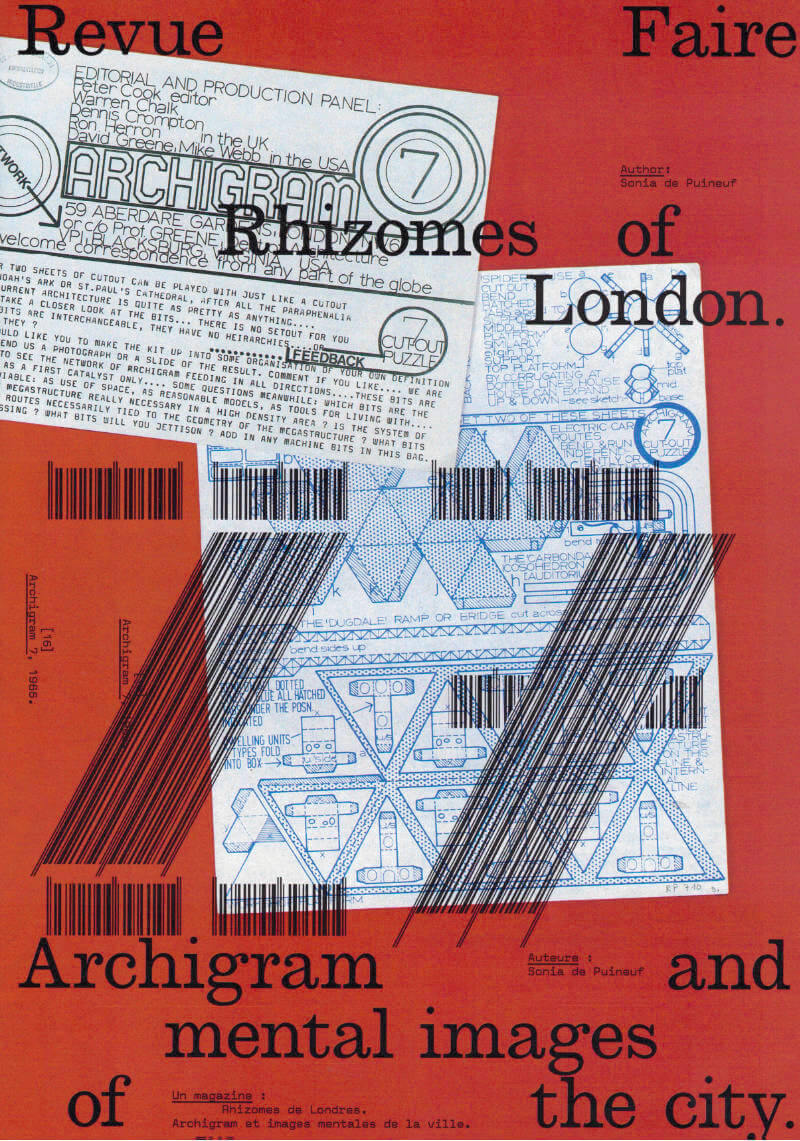
Revue Faire n°27: Rhizomes of London
A mine of images and ideas for architectural and urban-planning practices, the journal Archigram (1961–70) has already been the subject of close reading and analysis by architects, historians, theoreticians, and architecture critics. This study approaches Archigram from a different angle, attempting to interpret it as a successful artifact of graphic design by confronting it with the achievements of its time and other inspirational eras of editorial and environmental graphic design.
It aims to explain the graphical evolution of the journal through the graphical stimuli of London—the city where the Archigram architects worked on a daily basis. It is an attempt to demonstrate that the publication, at first glance confusingly heterogeneous, is akin to a comprehensive mapping of the secret whirrs and the more obvious trends of the English metropolis, where the futuristic utopia of the dynamic city took shape in such a particular way. By identifying London’s potential during the mythical Sixties, the Archigram journal stands out as a rhizomatic image, a living mirror of the urban organism.
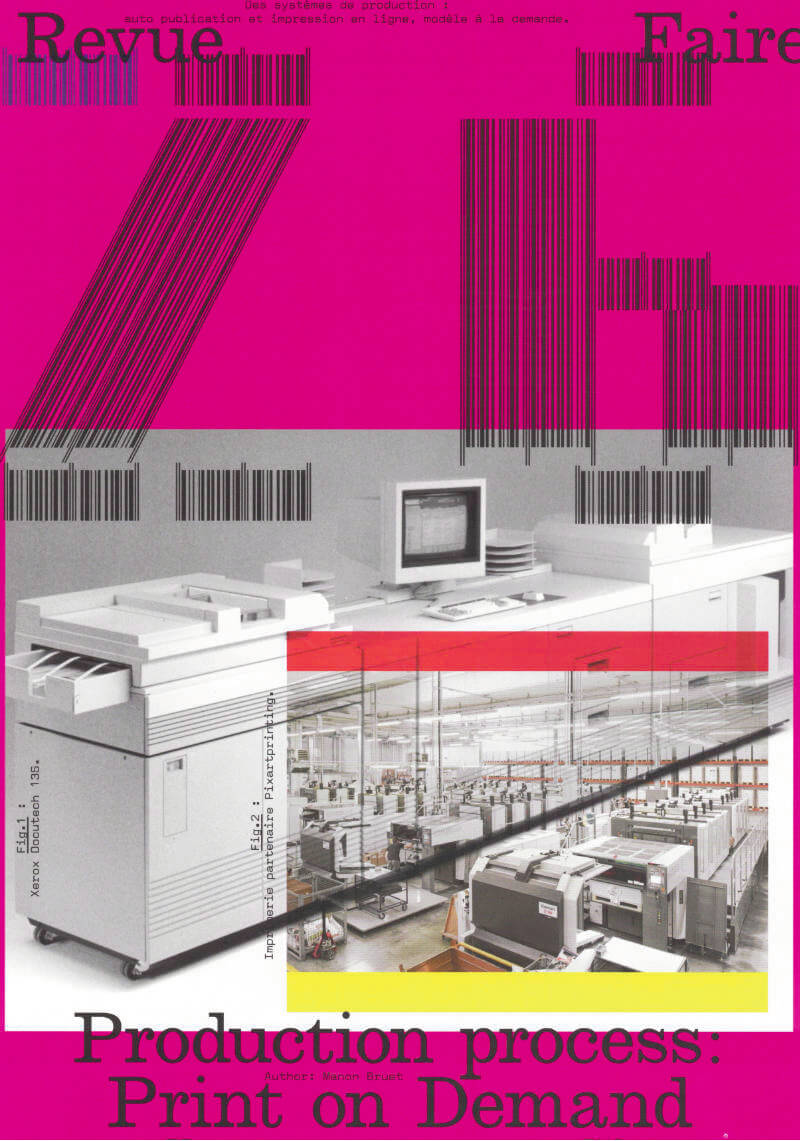
Revue Faire n°26: Production Process
In 2008, English Graphic Designer James Goggin ran a two-day workshop with design students at the Hochschule Darmstadt in Germany. The object which resulted gradually took on the appearance of a photo album, a typeface specimen, and a color chart. On the cover, the phrase “Dear Lulu, Please try and print these line, color, pattern, format, texture and typography tests for us” is clearly addressed to the online print platform for which this book was proposed as a test.
Ten years later, the offer has become more diverse and the success of such online platforms is undeniable—indeed the phenomenon has spread well beyond the field of publishing. While some bemoan unfair competition for printers, others, professionals and amateurs, see in it a freedom to print and distribute relatively well finished objects at low cost.
The possibilities of these systems of production, are multiple but nonetheless limited, and this obviously raises the question of a possible standardization of forms and formats. However, when it comes to Print On Demand, it seems that the issue is not so much the materiality of an object (the choice of format, paper or a particular manufacture) but rather the actual existence of this object itself, outside of usual channels of production and distribution.

Revue Faire n°25: Exhibition Views?
Photographs of works of art in an exhibition or studio setting, enlarged to the size of the wall, have become an essential and increasingly systematic element of contemporary museography. The institutional curator accompanied by his or her set designer, and the independent curator, both use them as much to recontextualize works as for their aesthetic qualities as documentary images that have become immersive and reflexive.
The obviously richer relationship that artists have with these unique images reveals in various ways what is currently at stake in the act of exhibiting.
To create a kind of retrospective of his work, in 2016 Johnathan Monk debuted a series of exhibitions entitled Exhibit Model*, which consisted of covering the walls of the exhibition space with archive photographs that documented his work in different contexts over the last 20 years. Marie J. Jean considers these staged exhibition views as a form of augmented reality: “This manner of considering the exhibition, in other words, of exhibiting the work along with the context of its appearance, reminds us that the work of art “is a place”, “establishes a place”, is “a has taken place**”.
However for Johnathan Monk, who often uses the work of other artists, isn’t it simply a way in which to appropriate his own work?”

Revue Faire n°24: A Theater Identity
Designed by Cornel Windlin (with Gregor Huber), the communications of the Zürich Schauspielhaus for the 2009/10 and 2010/11 seasons appeared just as the collaboration between the designers and the theater ended: with the Grand Prix of the Brno Biennial in 2010, where they won first prize in the international competition, with an exhibition in Chaumont the following year at the same time as the Swiss Federal Design Award, a brief appearance in specialist magazines and on specialist sites, and then nothing at all.
Once again, Cornel Windlin retreated into the shadows, leaving behind work which asserted itself through both its amplitude and completeness in the heavy silence which remained, and through the multifaceted mass of the media imagery that it reactivated. A series of seasonal posters, event posters, annual and monthly programs, booklets dedicated to each piece, invitations, flyers, graphic materials from the program for younger audiences… everything is here, set in a precisely tuned bold Unica77, digitized by the Lineto foundry with the original team of designers (along with Windlin), all coming together in that blindness inherent to times of eclipse, where the black disk chosen by Windlin as the identity of the Schauspielhaus stands out. Now, a decade later, the idea is to propose a meticulously organized reception, informed by Cornel Widlin and placed in a cavalier perspective by the analysis of Thierry Chancogne.
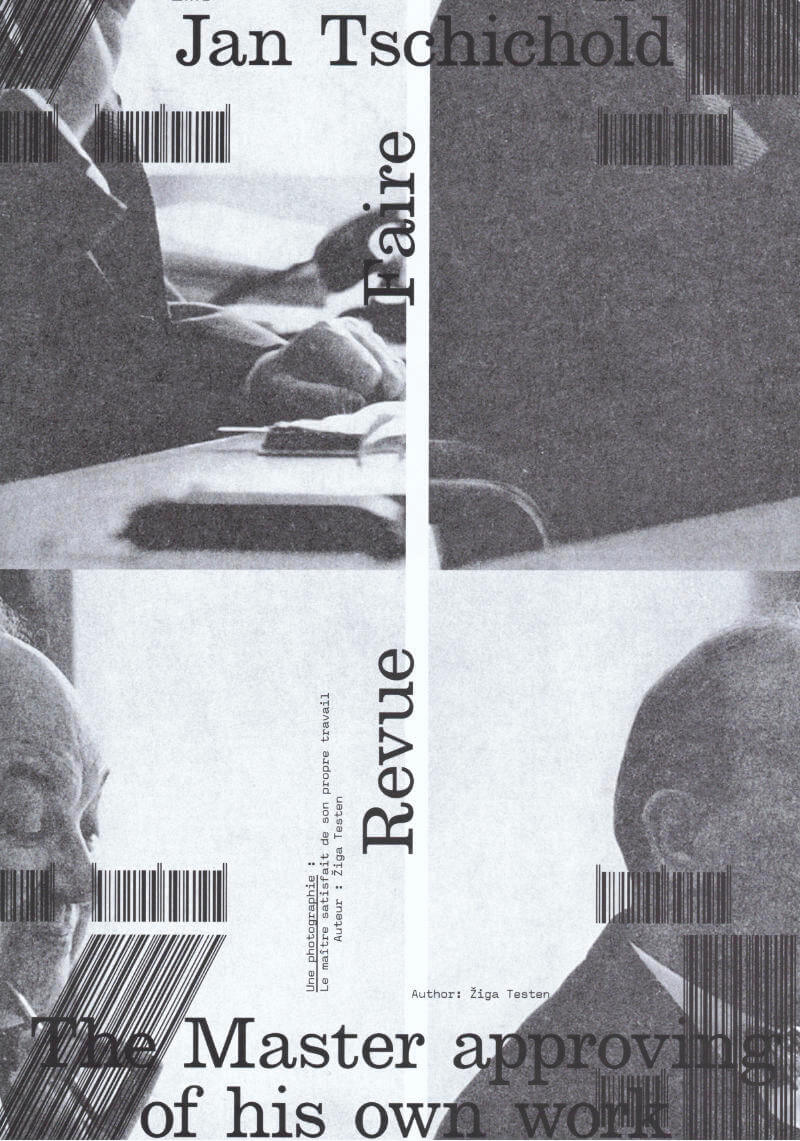
Revue Faire n°23: A Portrait
Design history as an independent discipline and field of study appears to be in trouble. Design historians complain about its diminishing influence within universities due to the ongoing instrumentalisation of higher education. The Eurocentric canon built upon values and methods adopted from art and architecture history has been contested by decolonial theories. And finally, it appears that the trust in the institution of ‘history’ itself and its meta-narratives has eroded.
A discipline that was once considered to provide reflection on what came before and guidance on what could come to be—under the auspice of a grand narrative of continuous progress—has been replaced by modest narratives, social anthropologies, and claims of the ‘end of history’.
In this article, I rummage through the ruins of design history and try to unpack what it was that we once considered design history and our design history canon, how we wrote about it and to what end. In particular, I focus on this one image: a portrait photograph of a well-known historical figure, the designer and typographer Jan Tschichold. How is it used? And what stories do we tell about it?
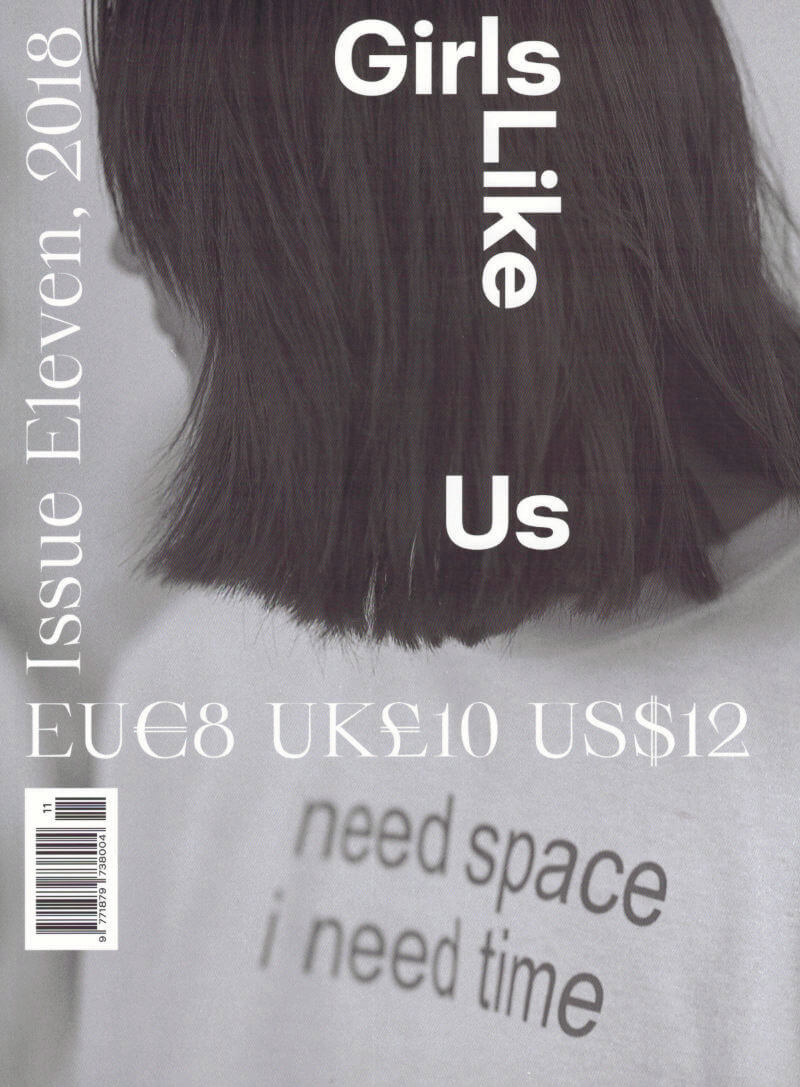
Girls Like Us #11 - Economy
Jessica Geysel, Sara Kaaman and 2 more
Framed as inescapable, indescribable, uncontrollable and essential, economies are everywhere. Oppressive and enabling, lucrative and undervalued, there are economies that trade our emotional labour, desires, love, fertility, time, minds, queerness, politics and clicks. There are economies that we can control and that control us, and those that we can subvert to serve our collectives. A mark, a yen, a buck or a pound, in a conversation with a cat, an app-enabled journey through a rainy Shanghai night, in the margins between intimacy and power, in the kitchen, with your record collection, under the tip of the iceberg, at the foot of a tower she built, dancing at the lesbian bar.

Girls Like Us #10 - Future
Jessica Geysel, Sara Kaaman and 2 more
We want a future outside of straight time. A future in which all our friends and lovers and their lovers are coming over for dinner around a table we built together. We want a future that is fair, fun, furry, fabulous, fierce, free and not fucked up. We want futures.
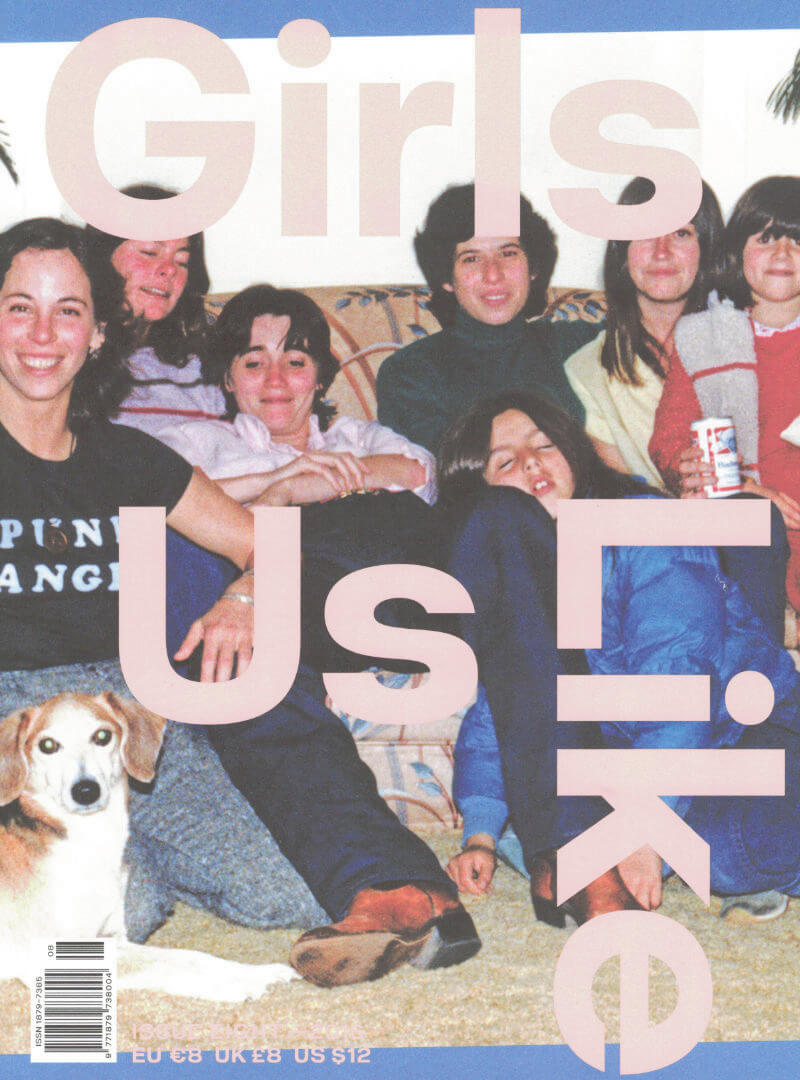
Girls Like Us #8 - Family
Jessica Geysel, Sara Kaaman and 2 more
Dear Lovers, Sisters, Brothers, Mothers, Adopted Aunts, Long Lost Fathers, Half-cousins, Wives, Black Sheep and Partners In Crime
As you know, we have a soft spot for collectives, collaborations, friendships and support structures. People doing things with other people: loving, working, organizing, living. These strategies for surviving together form an underlying thread throughout all our issues. This time we wanted to look more closely at one way of naming these friendly constellations: FAMILY.
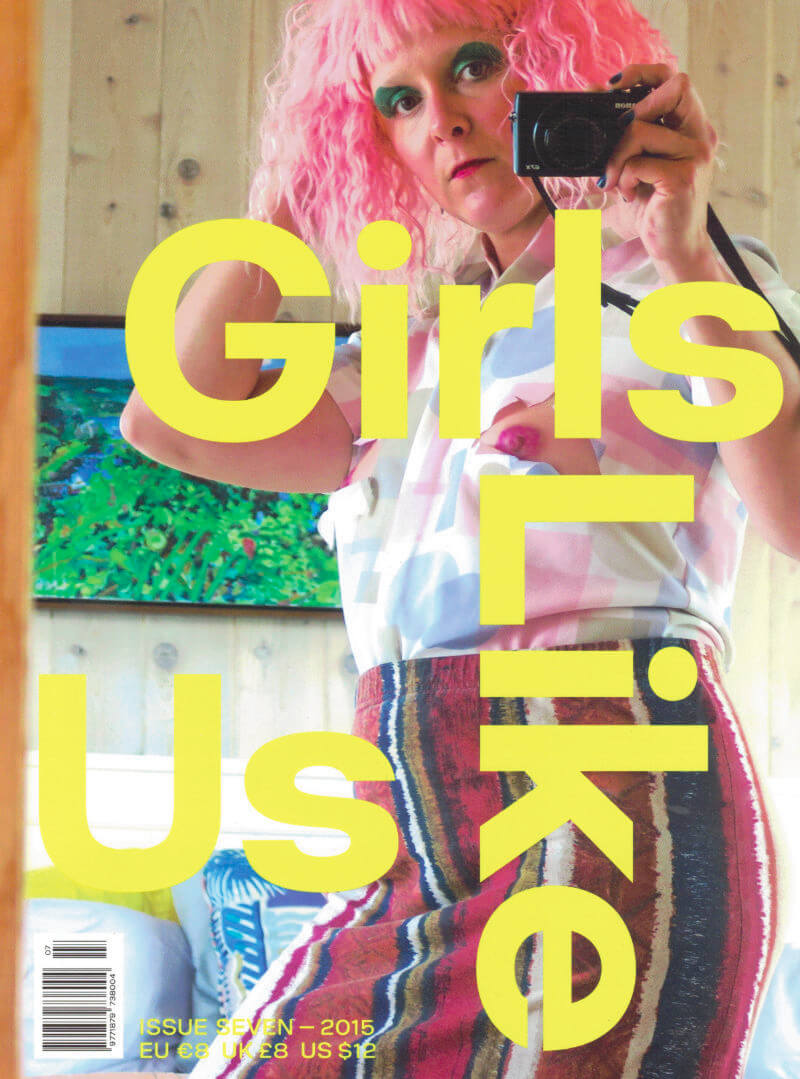
Girls Like Us #7 - Body
Marnie Slater, Katja Mater and 2 more
120 pages exploring the body and bodies, inside out and outside in. Bodies that dance and move. Bodies making waves. Body double. Bodies at work and working with the body. Using the body as an instrument. The body as medium and massage of touch and being touched. The single, singular body as the very basis for a ‘we’.
Interviews with image ingenue K8 Hardy, filmmaker Babette Mangolte, writer Jina Khayyer and documentarist Mariah Garnett. Essays by Derica Shields and Crystal Campell. Plus 7 Q&A's with healers, herbalist and modern witches. Beautiful bodily artists series and last but not least – horoscopic aphrodisiacs.

Girls Like Us #6 - Secrets
Jessica Geysel, Sara Kaaman and 2 more
A secret can be a private space for self-creation – or a shared site of pleasure.
We explore secrets in a plethora of forms and contexts. From layered accounts of mediaeval ecstasy to the unexplored sensory experience of smell. From camouflaged play to queer readings of astrological charts and the hidden history of house music. From a very analog point of view to the outskirts of the internet.
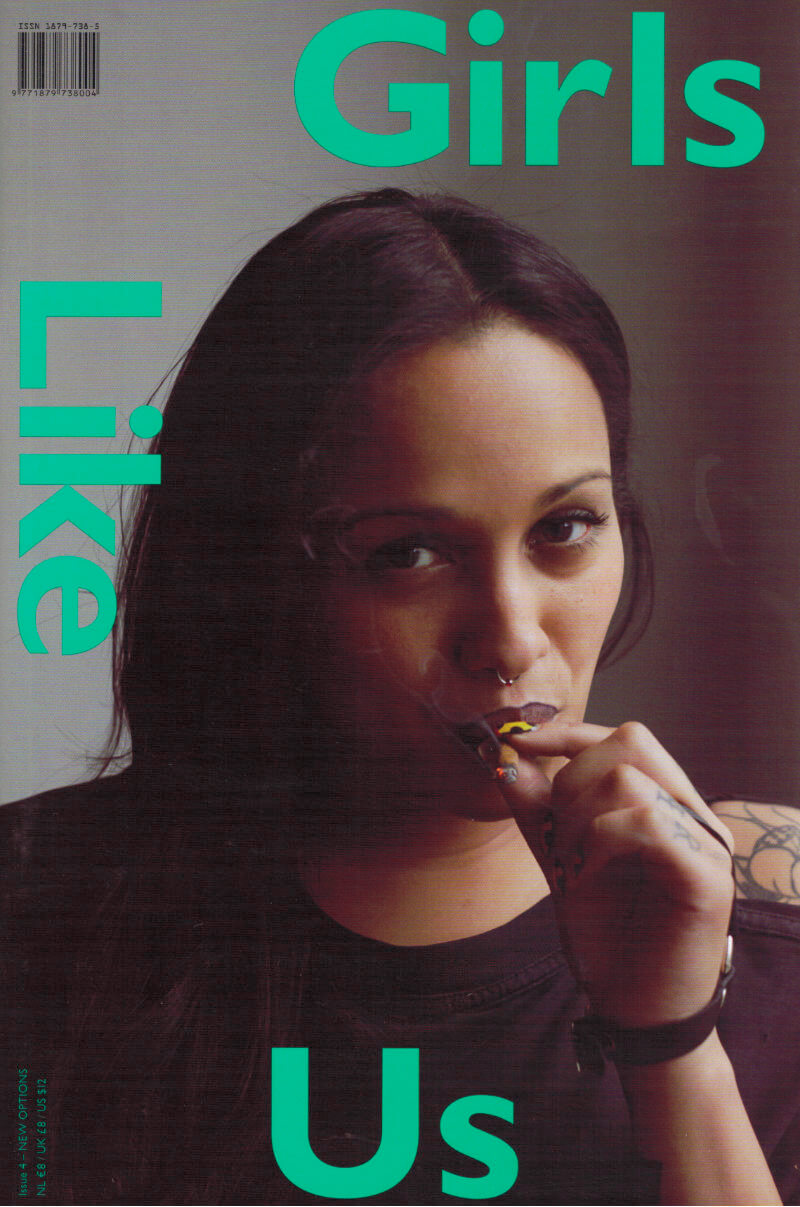
Girls Like Us #4 - New Options
Jessica Geysel, Sara Kaaman and 2 more
These days, if you call someone to go for a drink or a walk in the park, the obvious answer is: 'Sorry, I'm too busy'. Too busy with what? What do you do all day in your studio or office, bar or dancefloor, spending precious time on 'work'? And what makes it different from labouring? Do we slave for money – or no money – building on a system that is doomed to collapse? Or do we build on a new future where work and play are equal? When we work on our own initiatives and with a self-generated goal, would that still be called work? In this issue: other voices, other routes.
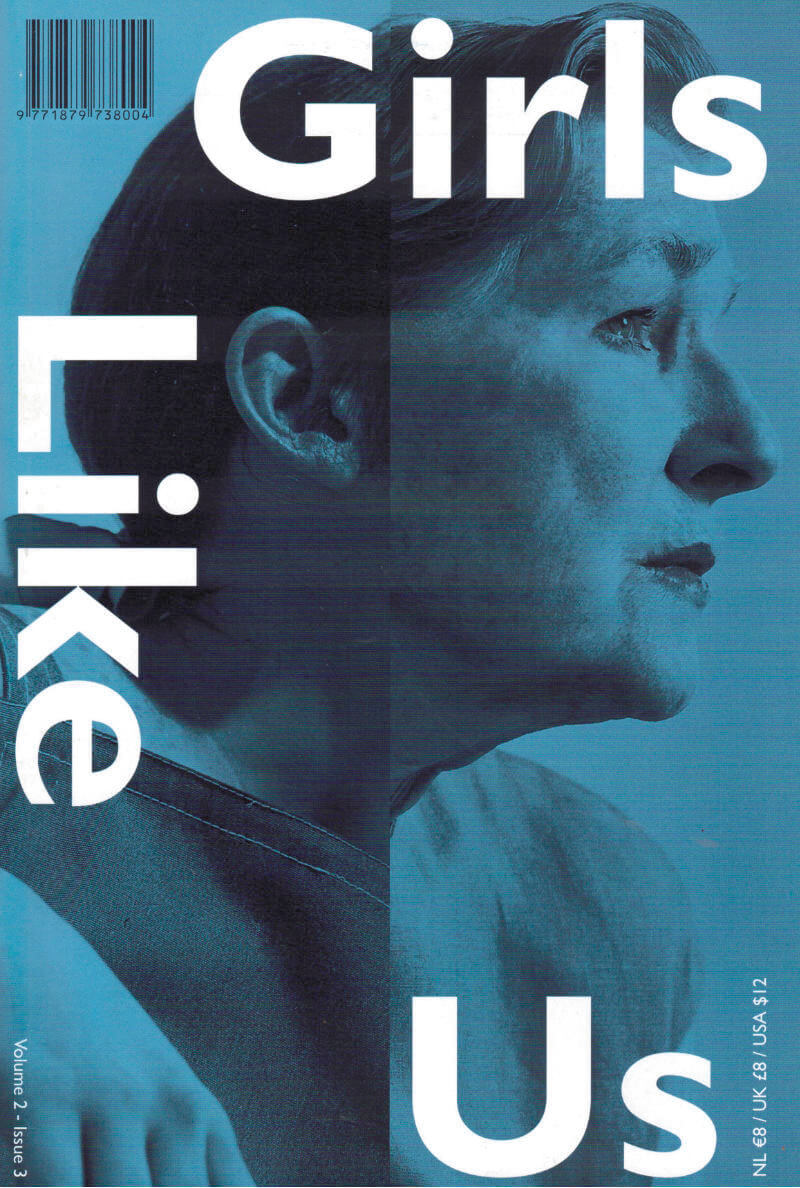
Girls Like Us #3 - Generations
Marnie Slater, Katja Mater and 2 more
Featuring Alice Carey, Anna Franceschini, Lizzie Fitch, Devin Blair, Kim Gordon, Annika Henderson, Melanie Bonajo, Marie Branellec, Elizabeth Orr, Holli Smith, Joke Robaard Litia Perta and Marie Karlberg.
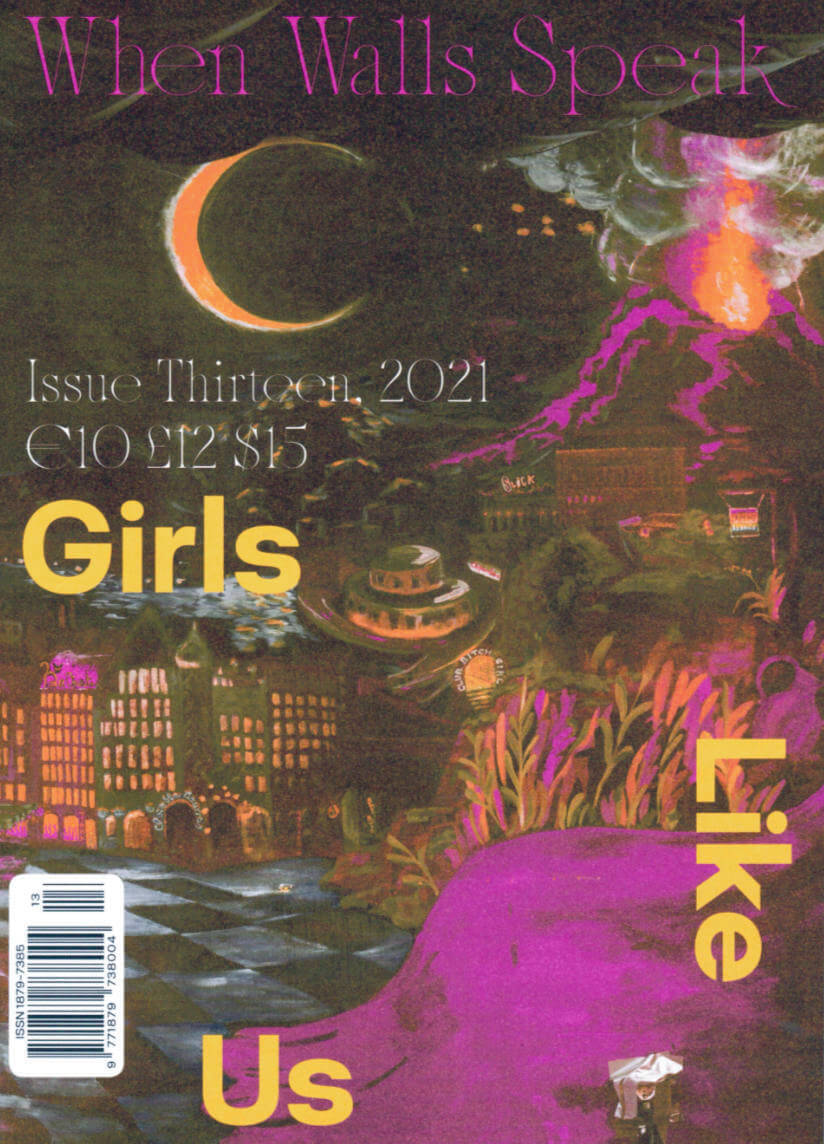
Girls Like Us #13 - The Club Scene
There can never be enough queer spaces, and the club is as good a place as any to begin an exploration. For generations, the club has been a space of legend, gossip, hearsay, and queer history, a place to gather and build community, to feel safe and experiment. The editors of ‘Girls Like Us’ decided to make a guest-edited issue centred around queer architecture back in 2019, long before the pandemic hit. They found the Swedish queer art and architecture collective MYCKET to fill this role, and later also realised how much club spaces were missed in pandemic times. Because, missing clubbing is one thing, but not being able to dance is something else entirely.

Another Gaze Journal 04
Including essays about Madeline Anderson, Lorenza Mazzetti, Laure Prouvost, Ben Rivers & Anocha Suwichakornpong, Agnieszka Holland’s Spoor, Susan Sontag’s filmmaking career, Storm De Hirsch, Zia Anger, Ashley Connor, Bruce LaBruce, Pina Bausch/Chantal Akerman, Magdalena Montezuma, Rebecca Horn, Anne Charlotte Robertson, Zhu Shengze, Beatriz Santiago Muñoz, Maya Da-Rin, Camila Freitas, Gong Li
An in-depth Afro-Brazilian roundtable with Tatiana Carvalho Costa, Janaina Oliveira, Everlane Moraes and Kênia Freitas; sections on Kira Muratova and Anne Charlotte Robertson; essays on subtitles, diffractive cinemas, ecocriticism/the anthropocene, literary adaptations, intimacy coordinators, strike on film, representing the internet,
Interviews with Betzy Bromberg, Zia Anger & Ashley Connor, Brett Story, Amandine Gay, Andrea Luka Zimmerman & Therese Henningsen
Experimental criticism from Kathryn Scanlan, Jen Calleja and Elissa Suh.
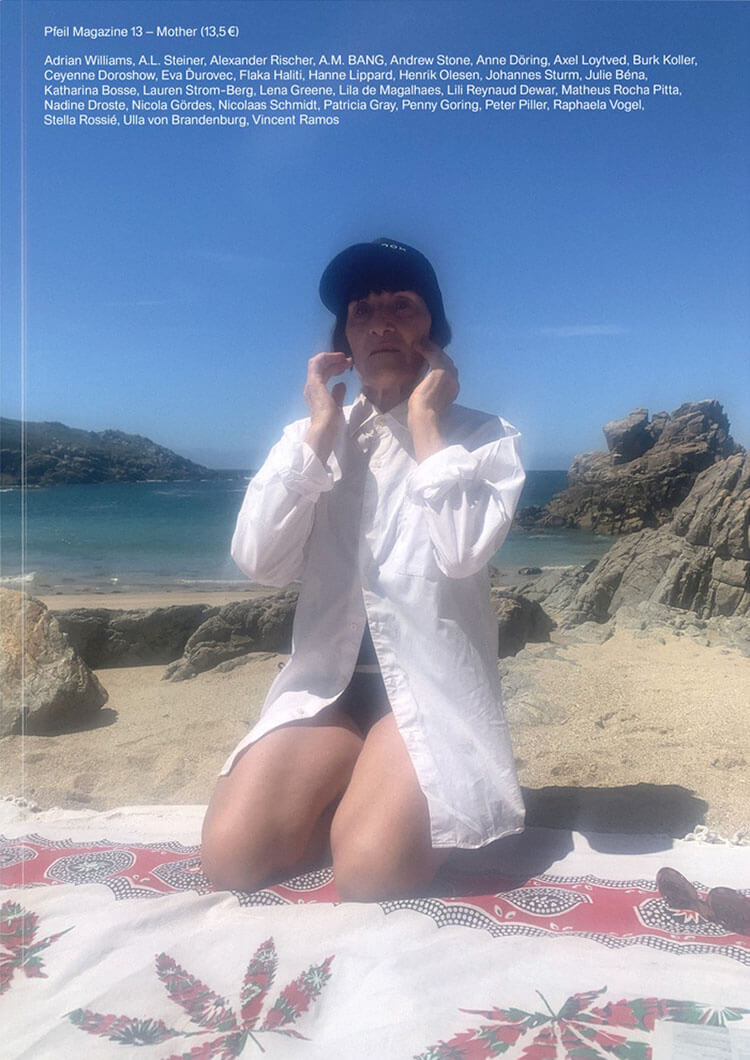
Pfeil Magazine #13 – Mother
The notion of a mother seems simple enough. But just one shy cut beneath the surface lies a multitude of facets, problems, questions, contradictions and wonders all connected to the idea of maternity. Biologically speaking, every person has a mother; perhaps it is the one fact we all have in common. Nevertheless this issue, dedicated to Mother, raises more questions than it is able to answer. Precisely because everyone appears to understand what a mother is, many crucial aspects of the topic are never questioned and are instead taken as a given. Is a mother defined by just having a child, or is it a child that defines the mother? Can we look at the mother without assuming womanhood? Can we untie the gendered attributes bound to the role of a mother? And what exactly are the notions of gender and sex that are connected to the common idea of motherhood? Where do they stem from? What kind of social, biological and economic pressure do mothers and potential mothers face?
In this issue, we explore alternative family structures and how responsibilities of parenting might be shared; prevailing working conditions for mothers in the arts; difficulties, challenges and prejudices mothers face in their professional lives, and what an ideal work environment might look like. Simultaneously, this issue deals with disappointments and unfulfilled expectations in the mother-child relationship, and again at that relationship in the social context. We picture the past and the present in the process of envisioning what maternity could look like in the future
Contributors
Adrian Williams, A.L. Steiner, Alexander Rischer, A.M. Bang, Andrew Stone, Anne Döring, Axel Loytved, Burk Koller, Ceyenne Doroshow, Eva Ďurovec, Flaka Haliti, Hanne Lippard, Henrik Olesen, Johannes Sturm, Julie Béna, Katharina Bosse, Lauren Strom-Berg, Lena Greene, Lila de Magalhaes, Lili Reynaud Dewar, Matheus Rocha Pitta, Nadine Droste, Nicola Gördes, Nicolaas Schmidt, Patricia Gray, Penny Goring, Peter Piller, Raphaela Vogel, Stella Rossié, Ulla von Brandenburg, Vincent Ramos.

HOW TO BECOME A MOTHERFUCKINGELEGIST
how to become a motherfuckinelegist est une revue créée par un collectif de gouines & féministes à Paris. Elle publie les recherches menées pendant les workshops d’écriture & traduction : How to become a lesbian. Ces ateliers sont gratuits et se déroulent toutes les deux semaines à Paris, en non-mixité (pas d'hommes cis).